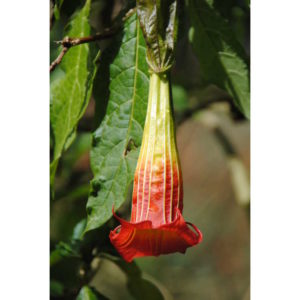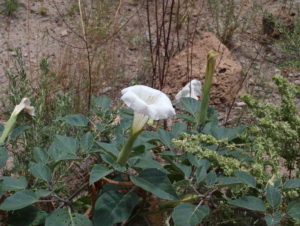Datura vs. Brugmansia
go.ncsu.edu/readext?543932
en Español / em Português
El inglés es el idioma de control de esta página. En la medida en que haya algún conflicto entre la traducción al inglés y la traducción, el inglés prevalece.
Al hacer clic en el enlace de traducción se activa un servicio de traducción gratuito para convertir la página al español. Al igual que con cualquier traducción por Internet, la conversión no es sensible al contexto y puede que no traduzca el texto en su significado original. NC State Extension no garantiza la exactitud del texto traducido. Por favor, tenga en cuenta que algunas aplicaciones y/o servicios pueden no funcionar como se espera cuando se traducen.
Português
Inglês é o idioma de controle desta página. Na medida que haja algum conflito entre o texto original em Inglês e a tradução, o Inglês prevalece.
Ao clicar no link de tradução, um serviço gratuito de tradução será ativado para converter a página para o Português. Como em qualquer tradução pela internet, a conversão não é sensivel ao contexto e pode não ocorrer a tradução para o significado orginal. O serviço de Extensão da Carolina do Norte (NC State Extension) não garante a exatidão do texto traduzido. Por favor, observe que algumas funções ou serviços podem não funcionar como esperado após a tradução.
English
English is the controlling language of this page. To the extent there is any conflict between the English text and the translation, English controls.
Clicking on the translation link activates a free translation service to convert the page to Spanish. As with any Internet translation, the conversion is not context-sensitive and may not translate the text to its original meaning. NC State Extension does not guarantee the accuracy of the translated text. Please note that some applications and/or services may not function as expected when translated.
Collapse ▲Do the names Datura and Brugmansia represent the same plant? No – but these two genera are in the same plant family (Solanaceae), and up until 1973, all Brugmansia species were included in the Datura genus. The common name “angel’s trumpet” is often used interchangeably for both genera. In addition, both Datura and Brugmansia are notorious for their poisonous qualities. So there’s plenty of room for confusion.
Perennials expert Allan Armitage provides three particularly useful criteria for separating the two genera. In general, Brugmansia flowers will be pendulous, as compared with the upright orientation of Datura flowers. Brugmansia flowers will tend towards white, yellow or peach; Datura flowers are usually white, or white and purple. Finally, Brugmansia fruit are smooth and not dehiscent (do not split open). Datura fruit are prickly and dehiscent.
Both genera produce beautiful, fragrant flowers. However, the fragrance can actually create problems by drawing people a bit too close for too long. It is known, for example, that sleeping near open Datura flowers can result in headache, nausea, dizziness, and weakness. Similarly, in a recent article in the magazine Homestead, Kathy Howard of Cornell University related an incident in which a couple picked up a Brugmansia and brought it home inside their vehicle. The half-hour drive home was long enough for the “toxic fumes” of the sweet-smelling flowers to make the gardeners “really sick”. Maybe transporting the Brugmansia in the trunk, or at least leaving the windows open, would have been a safer approach.
Datura and Brugmansia have wonderful ornamental qualities, but we should handle these plants with care and use them in locations where people and pets won’t get too close.






